May 8th, 2019
by Marco Giuliani

These famous female doctors fought misogyny or stigma and managed to revolutionize medical care.
Many of us would not be here today if not for these next famous female doctors and influential women in history that shaped the world as we know it!
For a long time, the field of medicine was dominated by (largely white) males. The story was, if a woman wanted to become a doctor or pursue a “manly” career, people thwarted them (Dr. Taussig was barred from speaking to her male colleagues) or forbid them from trying (Dr. Ross’s case).
Fortunately, these famous female doctors defied the social and racial prejudices that discouraged certain people from practicing science and went on to improve millions of lives through their research and discoveries.
Let’s learn more about some of the most famous women in medicine and most influential women in history!
1. Dr. Jane C. Wright
Achievements
- Pioneer chemotherapy researcher,
- Introducing the use of methotrexate in the treatment of skin and breast cancer.
Dr. Jane Cooke Wright – also known as “Jane Jones” – makes the first entry on our list of famous female doctors. She descended from a renowned medical family that defied the social and racial barriers in a profession that was traditionally dominated by white men.
For instance, Dr. Wright’s father was Dr. Louis T. Wright, one of the first black graduates of Harvard Medical School, and the first black doctor appointed to the staff of a New York City hospital. Her grandfather graduated from the Meharry Medical College, the first medical school in the South for African-Americans.
Coming from such a groundbreaking medical family, it’s no wonder Dr. Wright is now one of the most famous black women in medicine, pioneering several medical fields. One of the biggest breakthroughs in cancer treatment was the development of chemotherapy in the 1940s.
More specifically, she is credited with inventing a groundbreaking technique that involved using human tissue culture rather than laboratory mice to test the effects of potential drugs on cancer cells, thus being able to test a far wider range of anti-cancer agents.
Thus, she played a major role in elevating chemotherapy from a last resort treatment for cancer to the treatment that has the best shot of containing the disease. Another notable achievement is pioneering the use of methotrexate to treat skin cancer and breast cancer.
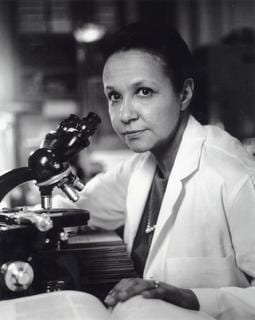
2. Dr. Gertrude B. Elion
Achievements:
- Engineered drug treatments for leukemia, gout, malaria, viral herpes, and kidney transplant rejection
- Developed AIDS medicine and the first successful antiviral drug (acyclovir).
Born in New York City 100 years ago to parents Robert Elion and Bertha Cohen, both immigrants from Lithuania and Poland respectively, Dr. Gertrude B. Elion had an insatiable thirst for knowledge even as a child.
Although her family did well, they lost their wealth after the 1929 Wall Street Crash. Her parents enlisted her in Walton High School. While she displayed interest in all subjects equally, she decided to pursue science as a full-time vocation after her beloved grandfather succumbed to cancer.
After majoring in Chemistry and obtaining her bachelor’s degree, being 1937 and all, she hit a brick wall, as no one took her seriously. In a field dominated by men, everybody wondered why a woman wanted to pursue a career in science at all.
She was then rejected by numerous graduate programs. However, nothing seemed to stop her as Gertrude took an unpaid position as a laboratory assistant as a backup plan. While studying, she supported herself by working as a substitute science teacher in New York City public schools.
Her passion wouldn’t have her stop there, however. Although she was unable to find a graduate research position, she eventually gained employment as a food quality supervisor. After some time, she transitioned to working for a food laboratory, where she gained some experience before becoming George H. Hitchings’ assistant.
With biochemist George Hitchings, she invented a new methodology that would soon prove quite revolutionary. Instead of relying on trial-and-error processes, they focused instead on analyzing the difference between healthy cells and pathogenic cells. They then engineered drugs that would target a particular pathogen.
This new methodology led to some groundbreaking results. By using this targeted method of testing, Elion played a major role in the development of mercaptopurine, a drug that changed childhood leukemia from a death sentence to a condition that many children survive.
Her research has also led to the mitigation of conditions such as ulcerative colitis, rheumatoid arthritis, and played a key role in developing drugs that combat malaria, urinary tract infections, gout, and kidney stones.
Dr. Gertrude B. Elion’s efforts were rewarded in 1988 with a Nobel Prize in Physiology or Medicine (with George H. Hitchings and Sir James Black). She remains today one of the most famous female doctors and most influential women, as her work led to the betterment of millions of patients suffering from AIDS and herpes.
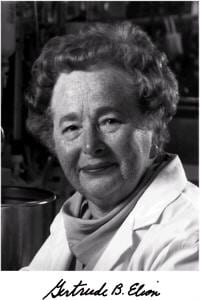
3. Dr. Gerty Cori
Achievements:
- Paved the way to viable treatment options for diabetes.
- The third woman – and first American woman – to win the Nobel Prize in science.
- The first woman to be awarded the Nobel Prize in Physiology or Medicine.
Born Dr. Gerty Theresa Cori was the third woman – and first American woman – to win the Nobel Prize in science, as the first woman to be awarded the Nobel Prize in Physiology or Medicine.
Dr. Cori was born in Prague, then part of Austro-Hungary, into a Jewish family in 1896. Her father, Otto Radnitz, was a career chemist who became the manager of sugar refineries after inventing an effective way for refining sugar. Her mother, a friend of Franz Kafka, was a socialite and culturally sophisticated woman.
She decided to pursue a career in medicine at the age of 16 but found out she lacked the prerequisites in physics, chemistry, mathematics, and Latin. While most people would’ve understandably called it quits at this point, Dr. Cori recovered the equivalent of eight years of Latin, five years of science, and five years of mathematics in a single year.
While studying for her degree, she met Carl Cori, an aspiring medical student who was impressed by her charm, intelligence, and sense of humor. They married and moved to Vienna. Facing dire financial difficulties and increasing anti-semitism, they both decided to immigrate to the United States. They were both employed at the State Institute for the Study of Malignant Diseases (now the Roswell Park Cancer Institute) in Buffalo, New York.
Although discouraged to work together, they specialized in analyzing carbohydrate metabolism. Together with her husband, she invested a large number of her research efforts into biochemistry, metabolism, and physiology. Their main interest was in how glucose is metabolized in the human body and how hormones regulate this process.
After years of work, Dr. Cori and her husband identified the enzyme that facilitates the decomposition of glycogen into glucose. Dr. Cori’s groundbreaking research, at times overlooked in favor of her husband’s contribution, served as the basis for future viable treatment options for diabetics.
Among her achievements is persisting through what was clearly a bias against women during the time. Compared to her husband, for example, Dr. Cori had trouble with finding well-paying research positions. Through her perseverance, Dr. Cori showed women from across the globe that skill and expertise does not differ from gender to gender.
The Coris – Dr. Cori and her husband, Carl Cori – are the third ever married couple to win the Nobel Prize.
One of the most famous women in medicine of all times, Dr. Cori (together with Carl Cori) received in 2004 the distinction of National Historic Chemical Landmark in recognition of her work in clarifying carbohydrate metabolism.
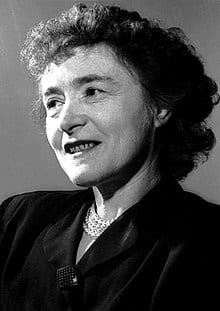
4. Dr. Helen Brooke Taussig
Achievements:
- Invented the field of pediatric cardiology,
- Established the Blalock-Taussig-Thomas system.
Dr. Helen B. Taussig was not only a renowned American cardiologist but also one of the early leaders among women in American medicine. As an activist, she earned a well-deserved reputation as a staunch supporter of women in science and medicine. Her drive to promote women in the medical field and raise awareness about the discrimination that they faced came from personal experience.
She studied histology, anatomy, and bacteriology at Harvard Medical School and Boston University, but both schools prohibited her from earning a degree. She was particularly discriminated against in her histology class, where she was prohibited from speaking to her male classmates of fear that she would, quote, ‘’contaminate’’ them.
As a doctor, researcher and scientist, Dr. Taussig made several breakthrough discoveries that shaped the field of pediatrics. She invented and established the specialty of pediatric cardiology when she published Congenital Malformations of the Heart in 1949.
Together with Drs. Alfred Blalock and Vivien Thomas, she created the Blalock-Taussig-Thomas system that is used to prolong the lives of children born with tetralogy of Fallot – the most common cause for the condition that is popularly known as the blue baby syndrome.
That’s not all, though. Dr. Taussing was partially deaf after an ear infection suffered during childhood, which eventually developed to full deafness later in life. She did not stop working, however, using lip-reading and hearing aids to interact with her patients.
A source of amazement was that she learned how to determine the exact rhythm of her patients’ heartbeats only with her fingers and without a stethoscope. Some say this ability to treat the heart by touch instead of sound led to many of her innovations.
As famous female doctors go, Dr. Taussig’s legacy is hard to match. In 1965, she was the first woman to become the president of the American Heart Association.
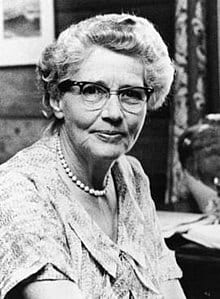
5. Dr. Elisabeth Kübler-Ross
Achievements:
- Pioneer in the study of death, dying, and grief
- Established the five phases that dying people experience – denial, anger, bargaining, depression, acceptance (the Kübler-Ross model).
Born in 1926 in Zurich, Switzerland, Dr. Ross’ career almost ended before it even started because her father forbade her from becoming a doctor. He told her that she could become either a secretary in his business or a maid.
As a young girl, Elisabeth contracted pneumonia and spent some time in the hospital, where she had her first brush with death in the form of a roommate who died near her. This desensitized her to the idea of passing away, which, after meeting survivors from the Maidanek extermination camp after World War II, helped develop the thoughts and beliefs on death that would later immortalize her.
Therefore, little did her father know that she had the makings of a brilliant scientist. Her dogged determination to pursue this career path helped her become one of the most famous female doctors in history. She left home at 16, and together with many brave women, served as a hospital volunteer during World War II. Six years after the war ended, in 1951, she finally enrolled in medical school.
Image Source: IPerceptive.com
Throughout her illustrious career in psychiatry, Dr. Ross focused, particularly on terminal illness. Her groundbreaking book On Death and Dying, published in 1969, describes the five stages that dying patients go through, namely denial, anger, bargaining, depression and acceptance. Her book revolutionized how the medical community approach terminally-ill patients and helped improve end of life care.
Her research in the issue of terminal illness was inspired by several personal experiences that marked her for life. She had fragile health as a child. As a triplet, she weighed only two pounds when she and her siblings were born. The second experience that marked her was a visit to the Majdanek concentration camp in Poland, where she saw the hundreds of drawings of butterflies carved into some of the walls by the prisoners. This made her think about the issue of death and the fragility of life.
In 1962, she found work as a teacher at the University of Colorado Medical School. While working there, she was both disturbed and surprised at how terminally ill patients were treated in the United States and that there was no subject addressing death and dying in the medical school curriculum.
Her experiences inspired her later work and research, which helped improve the conditions of dying patients and how terminally ill individuals were treated and perceived in general. She is also known for her contributions to the fight against AIDS, frequently conducting workshops out of her home in Head Waters, Virginia.
In 2007, she was recognized as one of the most influential women in history, becoming an inductee into the National Women’s Hall of Fame.
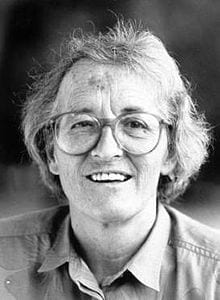
6. Dr. Audrey Evans
Achievements:
- Pioneer in the study and treatment of childhood cancers: neuroblastoma,
- Established the Evans Staging System,
- Founded the original Ronald McDonald House for young cancer patients, and the Ronald McDonald Camp.
Born in York, England, Dr. Audrey Evans attended the Royal College of Surgeons in Edinburgh in the early 1950s. She was the only female student in the school. She came to the United States in 1953 as a Fulbright Fellow at Boston Children’s Hospital.
In 1957, she was one of the first people to conduct research on Autologous bone marrow transplantation, then a novel medical concept. She also conducted some of the first trials for chemotherapy agents such as vincristine and dactinomycin.
At some point during her illustrious medical career, she gained the moniker ‘’The Mother of Neuroblastoma’’ thanks to her work in the clinical treatment of this condition, the most common of childhood cancers.
In 1971, she developed the Evans staging system for neuroblastoma. This system facilitates the identification of patients who would fare well regardless of treatment. She was also an active proponent of sparing children from the pain, suffering, and devastating side effects of chemotherapy, if the stage and type of cancer didn’t justify this treatment.
Her work and effort towards treating childhood cancers extended beyond the borders of the hospital. She had a vital role in the creation of the original Ronald McDonald House in 1974. The organization gave families of young cancer patients a place to stay while their children received treatment. The project was extended to include the Ronald McDonald Camp in 1987.
Besides being one of the most famous female doctors, Dr. Evans is a role model for each of us. In 2011, she co-founded the St. James School in Philadelphia to serve some of the city’s disadvantaged children along with their families.
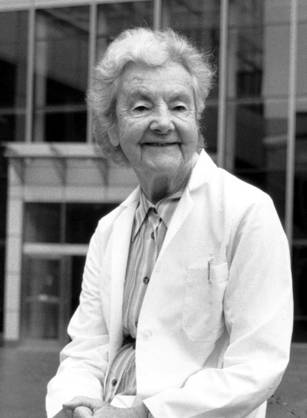
7. Dr. Virginia Apgar
Achievements:
- Established the Apgar Score, one of the first examples of evidence-based medicine,
- An early pioneer in the field of anesthesiology.
Does your mother still bring up the fact that the doctor gave you a 10 at birth, even if you’re well into your 30’s? Well, you can thank Dr. Virginia Apgar for that, as her invention inadvertently made her one of the most famous women in medicine.
Born the youngest of three children in Westfield, New Jersey, Dr. Apgar knew that she wanted to become a doctor as soon as she graduated high school. Wanting to practice as a surgeon, she graduated from the Columbia University College of Physicians and Surgeons, where she completed a residency in surgery in 1937.
Seeing many women attempt to be successful surgeons and fail, Dr. Allen Whipple discouraged her from pursuing this career path. However, he encouraged her to pursue anesthesiology because he believed that advancements in this field were needed to develop surgery further. Dr. Whipple felt that anesthesiology will benefit from her ‘’energy and ability’’ and made a wise decision guiding her on this path. She became one of the early pioneers in the field. She was the first woman to become a full professor at Columbia University of Physicians and Surgeons in 1949.
In 1953, Dr. Apgar established the Apgar score. An example of evidence-based medicine before the term was even invented. The Apgar Score was the first standardized tool to evaluate newborns and became the gold standard to evaluate the health of millions of babies since then.
In 1995, Dr. Apgar was officially inducted into the National Women’s Hall of Fame, as a well-deserved recognition for her status as one of the most influential women in history.
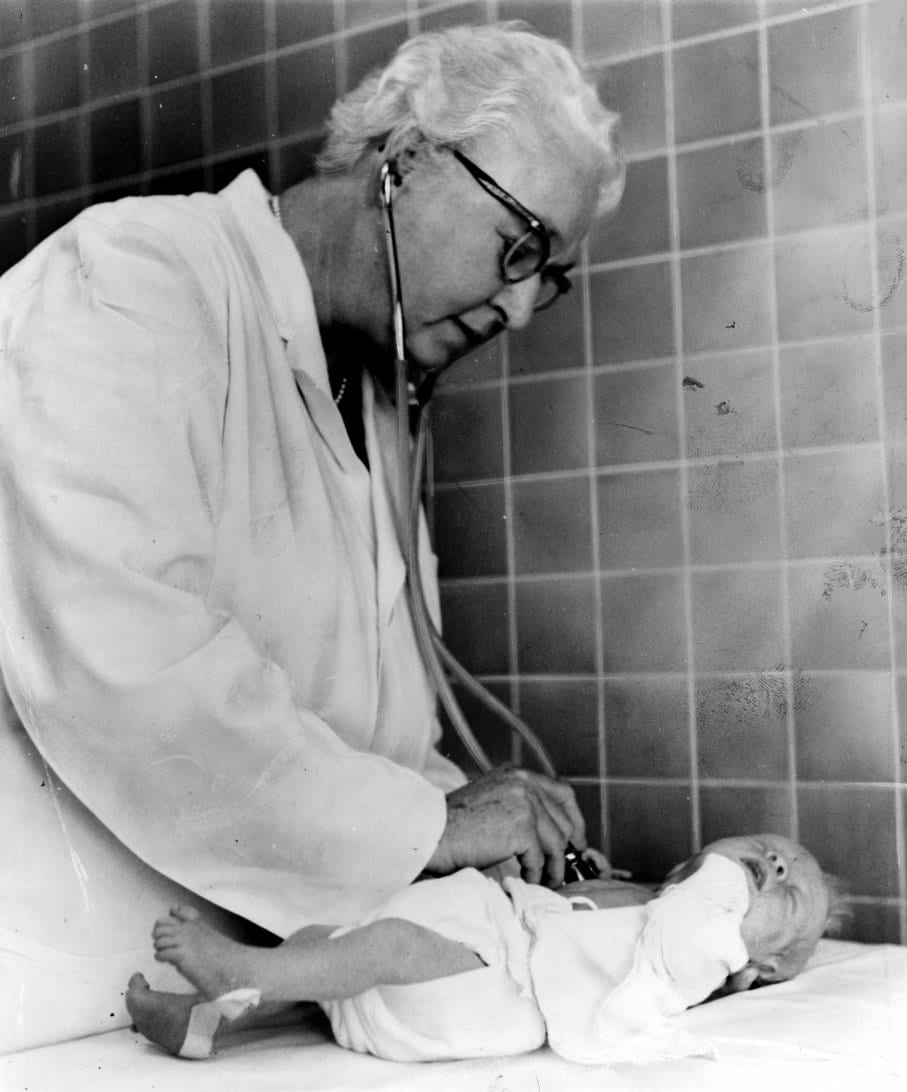
8. Dr. Ana Aslan
Achievements:
- Developed the drugs Gerovital H3 and Aslavital, discovering thus the anti-aging effects of procaine,
- An early pioneer of gerontology and geriatrics in Romania,
- Founded the Geriatric Institute of Bucharest, the first of its kind in the world and recognized by the World Health Organization.
A prodigy child, having learned to read and write by the age of four, Ana Aslan graduated from the Central School of Bucharest in 1915.
Her father’s premature death determined her to want to become a physician. Her mother did not approve of her choice because of the financial burden. Nevertheless, Ana went on a hunger strike until Mrs. Sofia Aslan accepted her daughter’s pursuit of a medical career.
Bound to help people and save lives, Ana Aslan attended to soldiers as a nurse in the First World War during her undergraduate studies.
You can thank Ana Aslan every time you get an anti-aging cream or a skin beauty serum, as her work is considered revolutionary. She focused on the physiology and process of aging and obtained her M.D. degree in cardiovascular physiology in 1924.
While she was experimenting with the effects of procaine on arthritis, Ana Aslan discovered other beneficial effects of this drug. The outcome led to a three-year study and the invention of the drug she called Gerovital (H3).
Almost fifty years later, (in 1976), together with colleague Elena Polovrăgeanu (a pharmacist), Ana Aslan invented another drug named Aslavital. It was similar to Gerovital and aimed at delaying the skin aging process.
Today, Ana Aslan is still one of the biggest names in anti-aging research, one of the most famous women in medicine, and a veritable brand in Romania and Europe for her cosmetic line. Ana Aslan coined the term “gerontology” and founded the Romanian Society of Gerontology and Geriatrics.
Ana Aslan is more than just one of the most famous female doctors in the world, she is also one of the most influential women in history. Many important politicians and celebrities used her anti-aging medicine and products – John F. Kennedy included.

9. Dr. Rita Levi-Montalcini
Achievements:
- Discovered the Nerve Growth Factor, for which she received the Nobel Prize in Physiology or Medicine jointly with Stanley Cohen in 1986,
- Founded the European Brain Research Institute in 2002.
Our last entry on the list of famous female doctors and the most influential women in history is Dr. Rita Levi-Montalcini. One of the most prominent neurobiologists of all times, she has discovered the Nerve Growth Factor. The NGF is the protein determining cell growth due to stimulated nerve tissue. She opened, thus, an entirely new world of research and development in neurobiology and neurocognitive sciences.
Dr. Rita Levi-Montalcini wanted to become a writer when she grew up, but after experiencing the death of a dear family friend, she turned her gaze towards the University of Turin Medical School. While women did not normally receive encouragements to go to college back in her day, Rita’s father supported his daughter’s pursuit of a medical career.
Neurohistologist Giuseppe Levi sparked Rita’s interest in the developing nervous system, but she lost her position as his academic assistant due to Mussolini’s law forbidding Jews from academic and professional careers.
However, Mussolini was not the man to stop Rita from her path to success. During World War II, she organized a small laboratory in her bedroom and continued studying the growth of nerve fibers in chicken embryos.
Fast forward to 1952 and we find Dr. Rita isolating the nerve growth factor. From there on, Rita Levi-Montalcini traveled where few women have gone before. In 1963, she became the first woman to receive the Max Weinstein Award for her significant contributions to the neurological field.
From 2001 until her death, she also served in the Italian Senate as a Senator for Life, an honor she received for her contributions to the scientific and medical fields. In 2012, at the time of her death, she was the oldest living Nobel laureate.
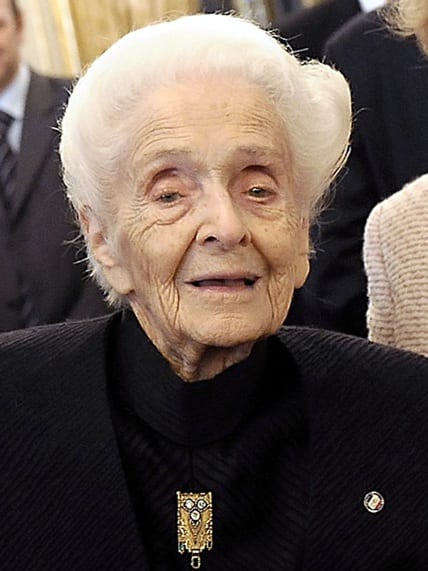
Want more science now?
Check out our news page where we post interesting studies and discussions (sometimes mocking them mercilessly) for more.

